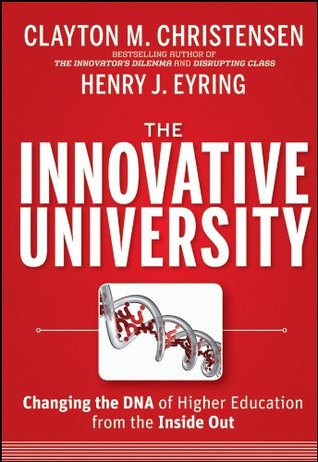More on this book
Kindle Notes & Highlights
Read between
January 12 - January 27, 2018
All completed an online training program and subsequently participated in ongoing teaching groups that met virtually, employing the same online technology used in student instruction.21
On average, online courses nearly matched face-to-face offerings in student satisfaction and measurable learning outcomes.
Significantly, the distribution of results was tighter: the best online courses couldn't match the best face-to-face experience, but the lowest-rated online course was better than the poorest of what was occurring in the classroom; the constant correcting and culling of low-performing online instructors meant that the “lower tail” of the online performance distribution was relatively short.22
By 2008, the typical graduate was finishing not in the minimum-required 120 hours but in 139, or nearly two extra semesters.
facilitates the dynamic, granting financial aid to students until they have earned 180 credits, or the equivalent of a bachelor's degree and a half.
more than four years to finish, as 65 percent of U.S. college graduates do.28
The tendency to seek product enhancements, or sustaining innovations, is a trait typical of customers in all industries. But it is especially pronounced in the case of employers of college graduates, because it is the students, not the employers, who bear the cost of the enhancements.
the university advising office developed a computer-based “drag-and-drop” planning system. A student with a declared major could sit down at the screen and see icons representing all of the courses required for graduation. As the student attempted to drop each of these courses into an eight-semester template, the computer program would identify the prerequisites courses and allow completion of the graduation plan only if all curriculum policies were satisfied.
The university's answer to this structural barrier to timely graduation was to begin to modularize its curriculum, drawing on principles developed by Kim Clark and his academic colleagues before his move to Rexburg.33 Modularity is the principle that has allowed the computer industry, among others, to provide ever-higher-performing and more customizable products to users at ever lower costs. The various components of the computer—memory chips, disk drives, software, printers, and so on—are created as modules. Each is a unique but integrated component of the larger system. Specialists focus on
...more
Clark asked his academic leaders and faculty members to make four-year graduation a realistic goal for all diligent students, including those who changed majors more than once. They adopted the slogan “No Credit Left Behind.”34
pare back the requirements of each major
ensure that prerequisite courses were kept to a truly essential few.
more could be taken in parallel rather than sequentially.
For instance, the faculty added to many majors introductory modules meant to help students decide whether the major was for them.
Other modules linked theory with practice, helping students prepare for specific jobs.
Most faculty members recognized, though, that the answer to meeting the specialization needs of a minority of students was not to require deep specialization of all. The new modular majors allowed for subject matter depth without making it the default design.
Quantifying the effects of class size gave the team greater appreciation for discussion-based learning, peer instruction, and other aspects of the Learning Model that allow students to learn more effectively even in groups as large as eighty or ninety.
One answer to the problem came in the form of a campuswide room-scheduling process that drew upon the new data on classroom capacity. The process helped department secretaries meet faculty preferences while achieving greater classroom utilization. Further relief came from renovations and consolidations of chronically underutilized rooms such as laboratories and computer rooms. The latter were an anachronism in the age of laptops, which were mandatory for BYU-Idaho students.


